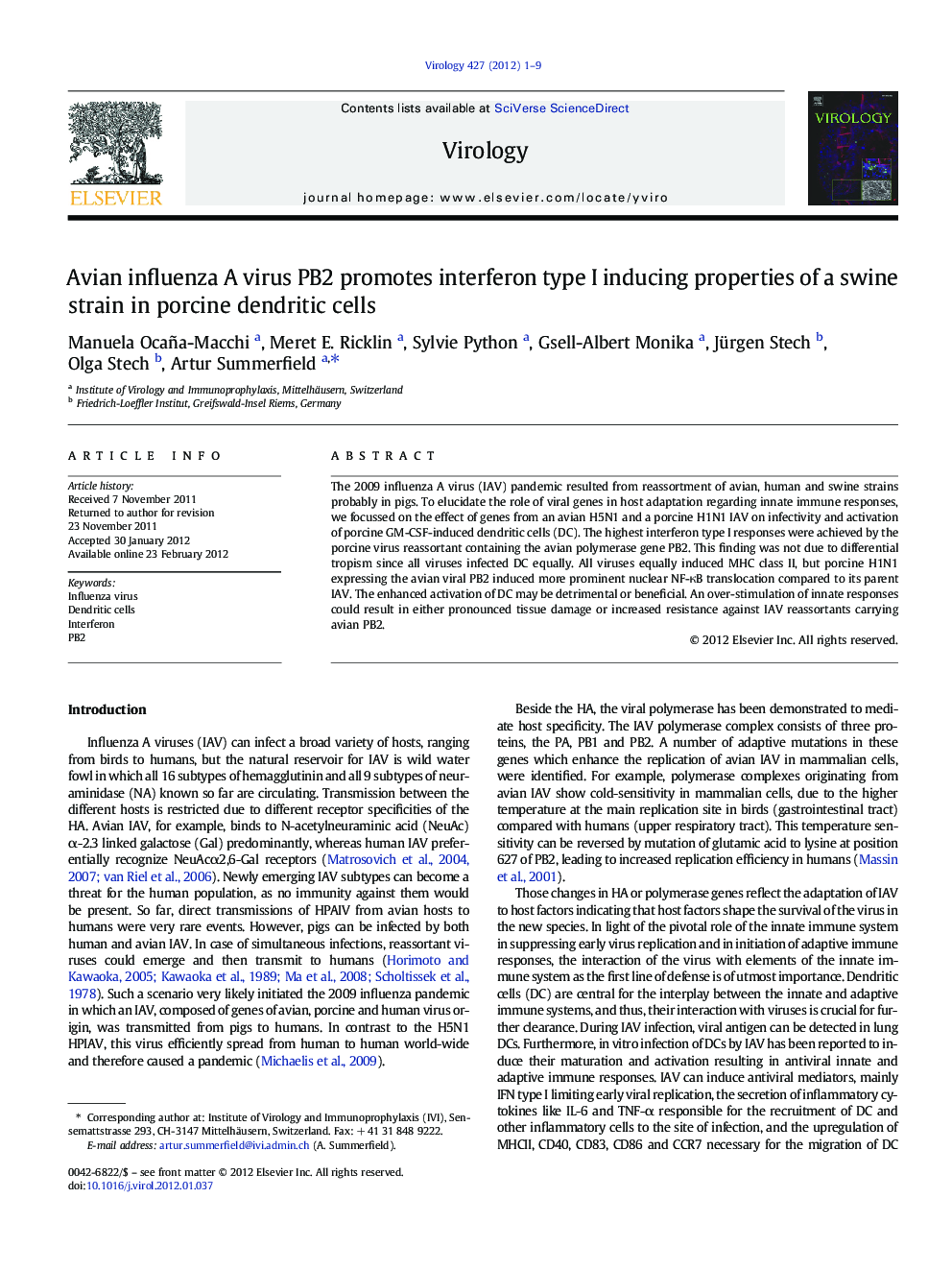| Article ID | Journal | Published Year | Pages | File Type |
|---|---|---|---|---|
| 3424451 | Virology | 2012 | 9 Pages |
The 2009 influenza A virus (IAV) pandemic resulted from reassortment of avian, human and swine strains probably in pigs. To elucidate the role of viral genes in host adaptation regarding innate immune responses, we focussed on the effect of genes from an avian H5N1 and a porcine H1N1 IAV on infectivity and activation of porcine GM-CSF-induced dendritic cells (DC). The highest interferon type I responses were achieved by the porcine virus reassortant containing the avian polymerase gene PB2. This finding was not due to differential tropism since all viruses infected DC equally. All viruses equally induced MHC class II, but porcine H1N1 expressing the avian viral PB2 induced more prominent nuclear NF-κB translocation compared to its parent IAV. The enhanced activation of DC may be detrimental or beneficial. An over-stimulation of innate responses could result in either pronounced tissue damage or increased resistance against IAV reassortants carrying avian PB2.
